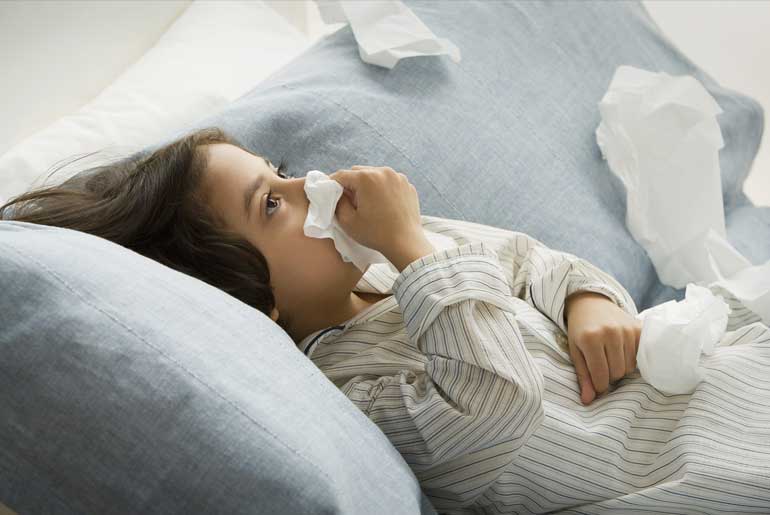Research presented at the European Respiratory Society International Congress in Milan, Italy, highlights the higher incidence of respiratory infections in young children growing up in urban areas compared to those in rural settings. A second study presented at the Congress identifies various environmental and lifestyle factors influencing the risk of chest infections in young children, with some factors increasing risk and others offering protection.
The first study, led by Dr. Nicklas Brustad, involved 663 children and their mothers, tracking them from pregnancy until the children reached three years of age. The research categorized children based on whether they were raised in urban or rural areas. Results showed that children in urban settings experienced an average of 17 respiratory infections (such as coughs and colds) before the age of three, while their rural counterparts had an average of 15 infections. The study also included detailed blood tests on mothers during pregnancy and on newborns, revealing differences in the immune systems of urban and rural children. Blood samples from mothers and babies correlated with living environments and the frequency of respiratory infections.
Dr Brustad stated: “Our findings suggest that urban living is an independent risk factor for developing infections in early life when taking account of several related factors such as exposure to air pollution and starting day care. Interestingly, changes in the blood of pregnant mothers and newborn babies, as well as changes in the new-born immune system, seem to partly explain this relationship.”
“Our results suggest that the environment children live in can have an effect on their developing immune system before they are exposed to coughs and colds. We continue to investigate why some otherwise healthy children are more prone to infections than others and what the implications are for later health. We have several other studies planned that will look for risk factors and try to explain the underlying mechanisms using our large amount of data.”
The second study, presented by Dr. Tom Ruffles, gathered data from 1344 mothers and their children residing in Scotland and England. Questionnaires were completed when children were one and two years old, covering topics such as chest infections, symptoms like coughing and wheezing, respiratory medication use, and exposure to potential environmental risk factors. Findings indicated that breastfeeding for longer than six months reduced the risk of infections in babies and children. Conversely, attending day care increased the risk of chest infections. Additionally, children living in damp homes were twice as likely to require inhaler treatments for respiratory symptoms and steroid inhalers. Living in areas with heavy traffic increased the risk of chest infections, while exposure to tobacco smoke raised the likelihood of coughing and wheezing in children.
These studies emphasize the importance of understanding the environmental and lifestyle factors contributing to respiratory infections in children. Strategies to address these factors, such as improving indoor air quality, reducing exposure to tobacco smoke, and promoting longer breastfeeding, can play a pivotal role in safeguarding the respiratory health of young children, particularly those growing up in urban areas.
“This research provides some important evidence about how we can help reduce chest infections in babies and toddlers. The benefits of breastfeeding are well-established, and we should continue to support mothers who want to breastfeed their babies. We should also be making every effort to reduce exposure to infections in day care, keep homes free of damp and mold, reduce tobacco smoking and cut air pollution.” Dr Tom Ruffles, Brighton and Sussex Medical School and University Hospitals Sussex NHS Foundation Trust, Brighton, UK
Co-researcher Professor Somnath Mukhopadhyay, of Brighton and Sussex Medical School and University Hospitals Sussex NHS Foundation Trust, Provides Additional Perspective on the Study: “The link between damp moldy housing and the need for these very young children to take asthma treatments emphasizes how urgently we need legislation to tackle mold and damp in social housing. For example, here in the UK we want to see rapid implementation of Awaab’s Law, which will force social landlords to fix damp and mold within strict time limits.” Awaab’s Law was proposed following the death of two-year-old Awaab Ishak, caused by the damp and mould in his local-authority home.
Professor Myrofora Goutaki, European Respiratory Society’s Chair of Paediatric Respiratory Epidemiology Group, Shares Insights on Recent Research Findings: “We know that some young children suffer with recurrent coughs and colds, and this can lead on to conditions such as asthma as they grow older. It’s important that we understand any factors that might be contributing to this, such as the conditions where children live and where they are cared for. The more we understand about these factors, the more we can do to protect the developing lungs of these young children.”
Disclaimer:
The information contained in this article is for educational and informational purposes only and is not intended as a health advice. We would ask you to consult a qualified professional or medical expert to gain additional knowledge before you choose to consume any product or perform any exercise.








